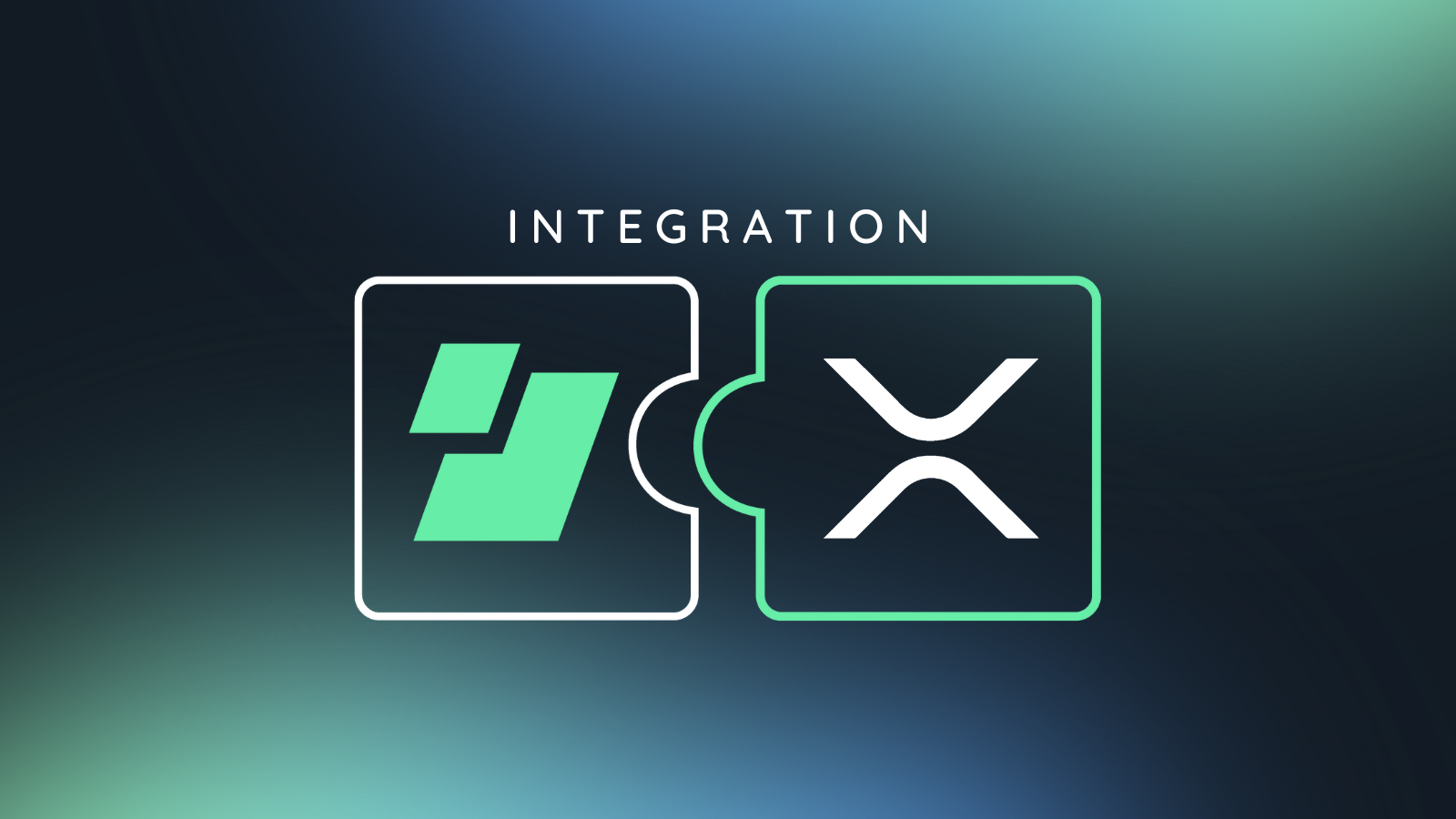Introduction
Users will now be able to enable stablecoins on the XRPL such as Stably USD and more, giving users the ability to receive, store, and send out these types of assets all in Edge.
If you’re new to crypto though, we’ll briefly go over the XRPL and XRP, what stablecoins are, and also how to enable or acquire them below.
What is the difference between XRP, XRP Ledger, and stablecoins?
XRP is the native digital asset of the XRP Ledger, created to revolutionize digital payments by purportedly providing faster, greener, and more cost-effective transactions than any previous digital asset. Additionally, XRP plays a crucial role in protecting the Ledger from spam and facilitating currency exchange on the XRP Ledger’s decentralized exchange. As the XRP Ledger and its community have evolved, new use cases for XRP have emerged, further expanding its utility beyond its original purpose.
The XRP Ledger (XRPL), on the other hand, is a public, permissionless, decentralized blockchain maintained by a global developer community. The XRP Ledger is designed to provide fast and efficient transaction processing, with settlement times of just a few seconds and transaction fees as low as fractions of a penny.
Stablecoins issued on the XRPL are cryptocurrencies that are pegged to the value of a fiat currency, such as the US Dollar or Euro. These stablecoins are issued by third-party issuers and are backed by a reserve of the corresponding fiat currency held in a trust account on the XRP Ledger. These stablecoins can be used for fast and efficient cross-border payments and as a store of value, without the volatility of traditional cryptocurrencies.
While XRP and stablecoins issued on the XRPL both play a role in facilitating cross-border payments, they serve different purposes. Stablecoins provide a stable store of value, while XRP provides liquidity and enables the exchange of different currencies and assets on the XRP Ledger’s DEX.
Why XRPL for stablecoins?
The XRP Ledger provides a compelling platform for stablecoins for a number of reasons:
- Low Transaction Costs: The XRP Ledger has a low-cost structure, with fees as low as 0.00001 XRP per transaction. This makes it a cost-effective platform for stablecoin transactions, which typically require frequent transfers between wallets.
- Fast Transaction Processing: The XRP Ledger is designed for fast and reliable transaction processing, with settlement times of just a few seconds. This makes it an ideal platform for stablecoin transactions, which require fast settlement times to maintain their stable value.
- Reliable and Secure: The XRP Ledger has been in operation for over 10 years and has a proven track record of reliability and security. Its consensus mechanism ensures that transactions are validated quickly and securely, while the decentralized nature of the network provides protection against attacks and malicious actors. This helps facilitate reliable currency exchange 24/7/365.
Overall, the combination of low transaction costs, fast transaction processing, a decentralized exchange, and a proven track record of reliability and security makes the XRP Ledger a great platform for stablecoins. It offers a cost-effective and efficient way to transact in stablecoins, with the ability to exchange them with other currencies and assets in a secure and reliable manner.
Are XRP and XRPL decentralized or owned by Ripple?
The XRP Ledger and its native digital asset XRP are decentralized and are not owned by Ripple. While Ripple was instrumental in the initial development of the XRP Ledger and XRP, they do not own or control the network but rather are one developer and contributor to the XRPL, among many.
The XRP Ledger is maintained by a global network of validators. The network operates on a consensus-based model, where validators must approve changes or updates to the network with at least 80% agreement, and maintain that minimum threshold for a minimum of two weeks. This ensures that the network is decentralized and not controlled by any single entity.
While Ripple contributes to the network, its rights and privileges are the same as those of other contributors. The XRP Ledger has over 150 validators on the network, with 35 or more on the default Unique Node List, which helps ensure that transactions are processed quickly and securely.
What are stablecoins and the different types?
Stablecoins are a type of cryptocurrency that are designed to maintain a stable value and are often pegged to the value of a specific asset or currency, such as the US dollar or gold. Unlike other cryptocurrencies such as Bitcoin, whose value can fluctuate widely, stablecoins are designed to provide a more stable store of value that can be used for transactions or as a hedge against volatility.
There are a few different types of stablecoins, but some of the most common include:
- Fiat-backed stablecoins: These are stablecoins that are pegged to the value of a fiat currency, such as the US Dollar or Euro. The issuer of the stablecoin holds reserves of the fiat currency that back the stablecoin’s value. Fiat-backed stablecoins are available on the XRP Ledger, such as the Stably USD (USDS) stablecoin.
- Cryptocurrency-backed stablecoins: These are stablecoins that are backed by other cryptocurrencies, such as Bitcoin or Ether. The value of the stablecoin is typically collateralized by the underlying cryptocurrency, which is held in reserve.
- Algorithmic stablecoins: These are stablecoins that are maintained through an algorithm that adjusts the supply of the stablecoin to maintain its value. Algorithmic stablecoins can be more complex to understand and are often subject to more volatility than other types of stablecoins.
Stablecoins can be used for a variety of purposes, including as a means of payment, as a store of value, or as a trading pair on cryptocurrency exchanges. Because they are designed to maintain a stable value, stablecoins can be particularly useful in contexts where price volatility is a concern, such as cross-border transactions or in trading markets.
What is an example of a Stablecoin on the XRP Ledger?
Stably USD (USDS) is a stablecoin on the XRP Ledger that is backed 1-to-1 by U.S. Dollars held in trust accounts managed by regulated U.S. custodians. It is a fiat-backed stablecoin that maintains its stability through the backing of the U.S. dollar. USDS is also built on other blockchains such as Ethereum.
Stably is a company based out of Seattle, Washington and is behind the USDS stablecoin which has partnered with a number of exchanges and wallets to enable the trading and use of USDS on the XRP Ledger.
It’s important to note that like all stablecoins, the value of USDS is tied to the US Dollar and is subject to the same risks and limitations as other stablecoins. It’s also worth noting that the use of any stablecoin, including USDS on the XRPL, can be subject to regulatory scrutiny and potential risks, so it’s important to exercise caution and conduct due diligence before using them.
How do I add XRP and XRPL stablecoins on Edge?
If you want to add XRP and XRPL Stablecoins to your Edge wallet, follow these simple steps:
- Tap the “Add Wallet” sign on the wallets list scene to create an XRP wallet. Select XRP and create the wallet.
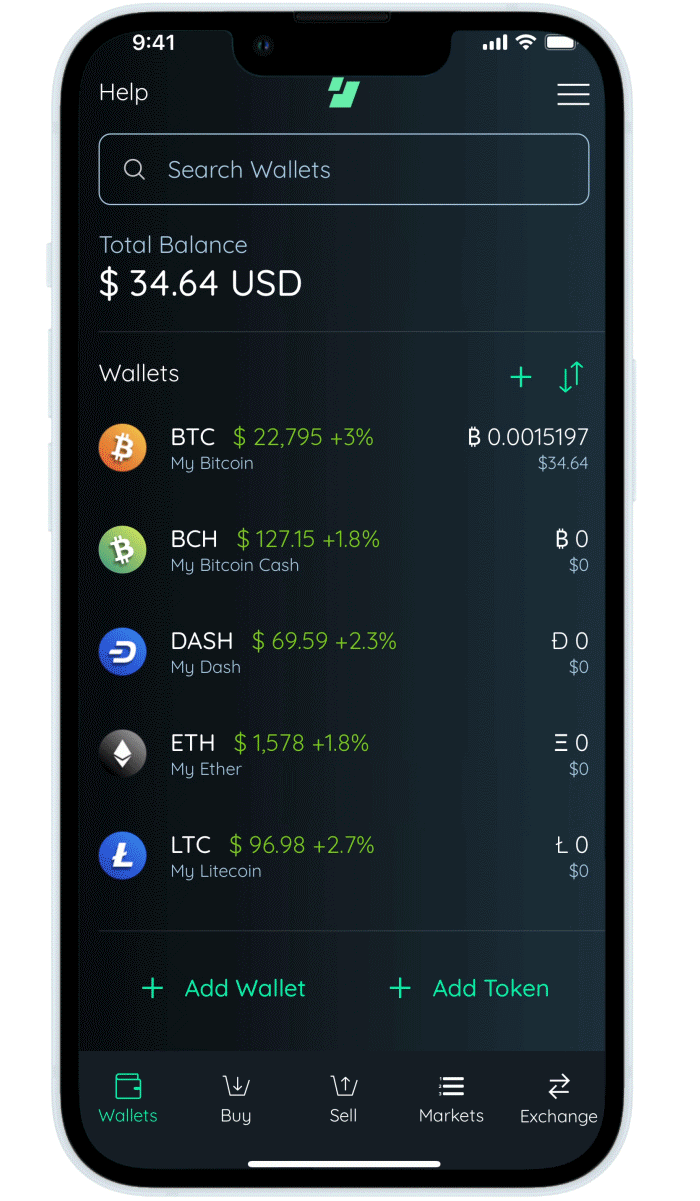
2. Once you’ve created the XRP wallet, tap on it in the wallets list. Please note that there is a minimum of 10 XRP reserves that will be locked in order to use your wallet. This is a rule on the XRP chain and Edge doesn’t make any profit from it.

3. While inside the XRP wallet, tap on the gear icon to access the wallet options. Then tap on Add/Edit tokens.
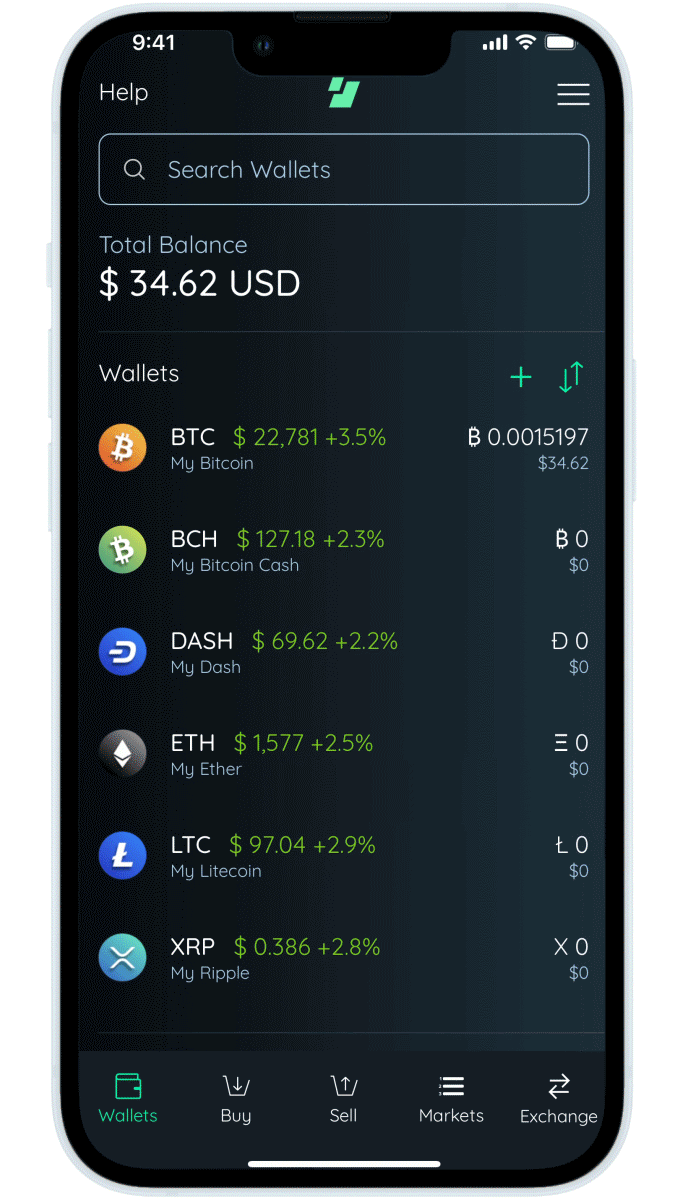
4. Turn on the stablecoins you wish to use, such as EUR.gh, USD.bs, USD.gh, and USD.st. Once you’ve turned them on, tap back to go to the wallets list.
5. Tap on any of the tokens you just added, such as USD.bs. You will see an Activate Token scene that requires a small fee paid in XRP to activate the token
6. Slide to confirm the payment fee to activate the token.
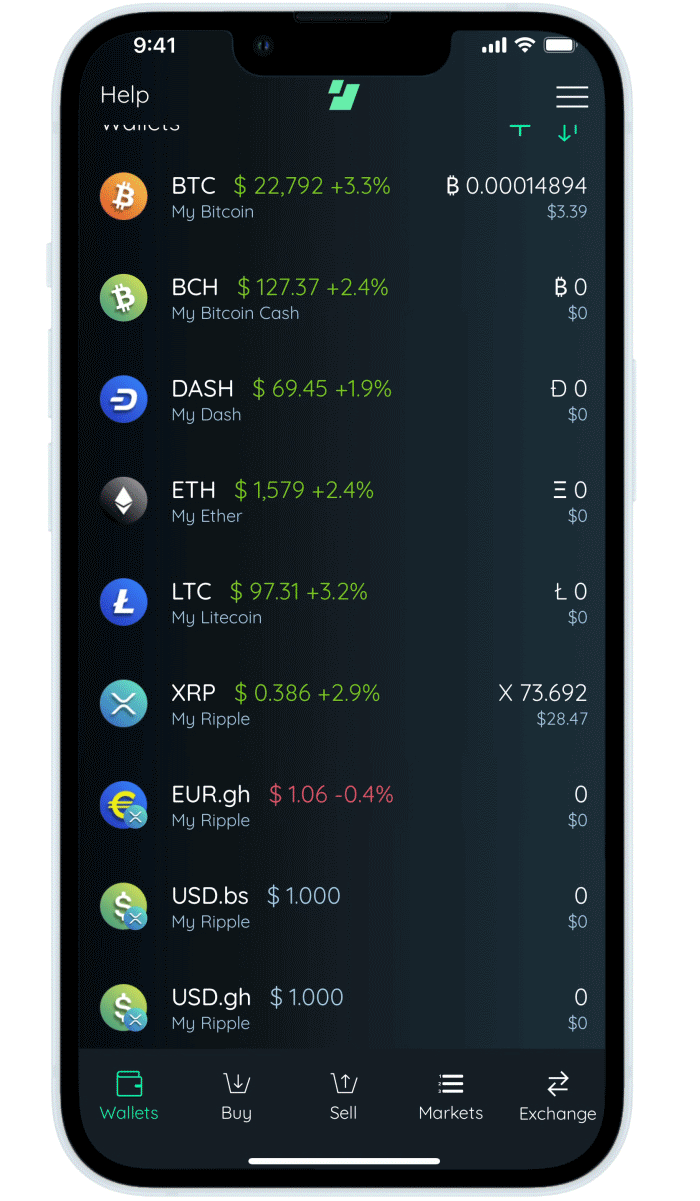
7. Once the payment is complete, the tokens are ready to use, and you can send yourself tokens to store on Edge.
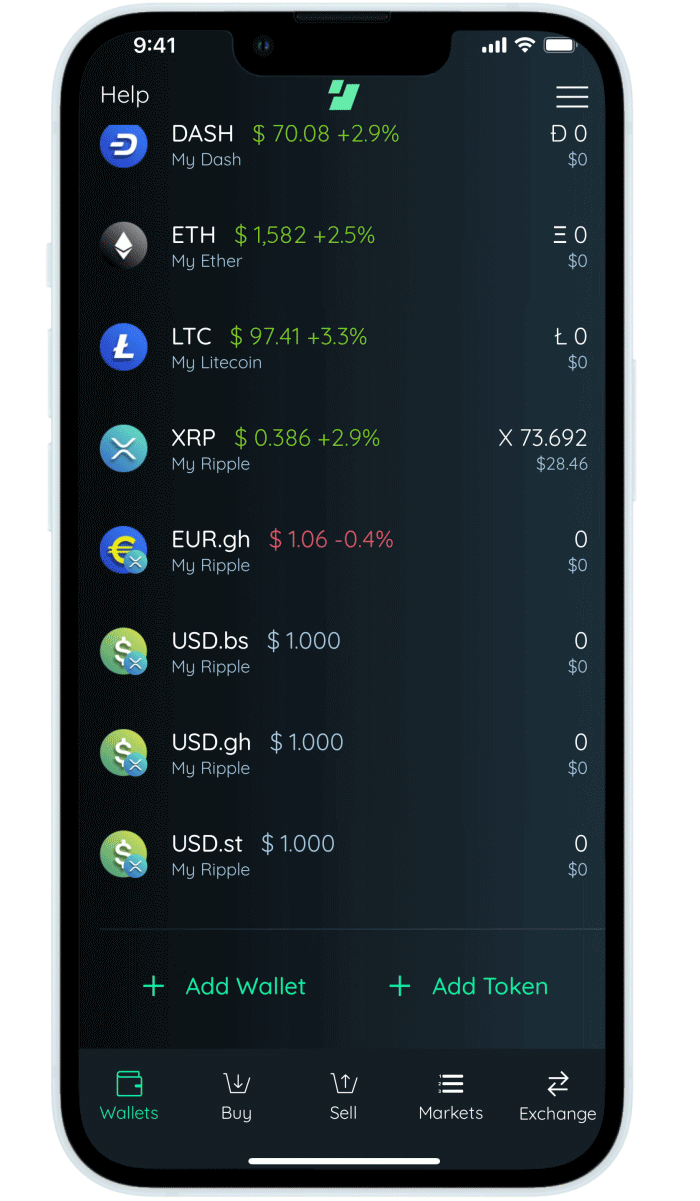
By following these steps, you can easily add XRP and stablecoins to your Edge wallet and start using them for your transactions.
What if I don’t have any XRP to make payment to activate the tokens?
If you don’t have any XRP but have some crypto to begin with such as BTC, you can swap your crypto into XRP by following these steps:
- Log into your Edge account
- Tap on the Exchange button located at the bottom right
- Set the source asset to BTC
- Set the receiving asset to XRP
- Enter an amount such as $20 that you would want to swap into
- Make sure that the end result would have you above the minimum XRP reserves explained earlier
- Tap Next and Edge will take care of the rest to find you the best rate
- Once a trade is found, review and Slide to Confirm if you are ready to make the swap
If you prefer to buy XRP, you can also do so with a credit card.
- Log into your Edge account
- Tap the Buy button located at the bottom
- Tap on Credit and Debit Card
- Select XRP from the list
- Enter an amount to purchase
- Tap Next and complete the rest of the steps to make the purchase
In as quick as a few minutes you will see XRP arrive into your wallet which you can then use to activate the XRP tokens you’ve enabled.
How do I get XRPL stablecoins?
In an upcoming release, Edge will support a DEX that will enable the functionality of swapping crypto into XRPL stablecoins. To stay tuned on when this integration becomes available be sure to subscribe to our newsletter below.
If you have any questions or concerns with depositing XRP into your Edge account, our support team is happy to help and can be reached by email at support@edge.app.
